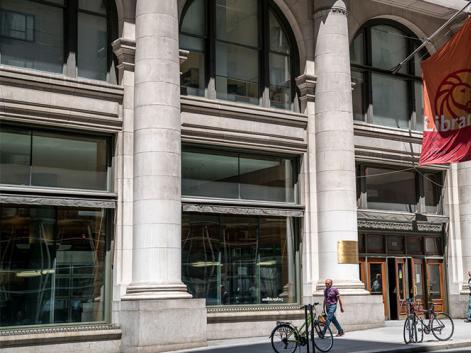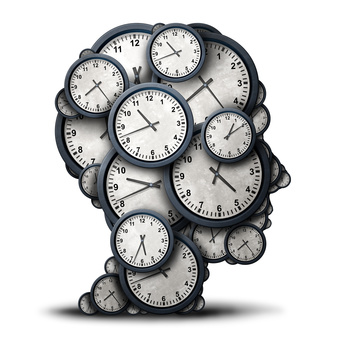Fachgutachten

Blickwinkel der Neurowissenschaften: Die Funktion des medialen Temporallappen bei der Verarbeitung von Erinnerung im menschlichen Gedächtnis
Current Topics Regarding the Function of the Medial Temporal Lobe Memory System.
The first clear insight that the medial temporal lobe of the human brain was in fact a system of anatomically connected structures that were organized into a memory system came in 1957 from the observations by Brenda Milner of the noted amnesic patient H.M. Subsequent work in humans, monkeys, and rodents has identified all of the components of the medial temporal lobe (MTL) that formed the memory system. Currently, work is ongoing to identify the specific contributions each structure in the medial temporal lobe makes towards the formation and storage of long-term declarative memory.
Weiterlesen...
Auswirkung depressiver Störungen auf die kognitive Leistungsfähigkeit
Cognitive Behavioral Performance of Untreated Depressed Patients with Mild Depressive Symptoms
This study evaluated the working memory performance of 18 patients experiencing their first onset of mild depression without treatment and 18 healthy matched controls. The results demonstrated that working memory impairment in patients with mild depression occurred when memorizing the position of a picture but not when memorizing the pictures themselves. There was no significant difference between the two groups in the emotional impact on the working memory, indicating that the attenuation of spatial working memory was not affected by negative emotion; however, cognitive control selectively affected spatial working memory. In addition, the accuracy of spatial working memory in the depressed patients was not significantly reduced, but the reaction time was significantly extended compared with the healthy controls.
Weiterlesen...
Patient H.M. - Forschung menschlicher Gedächtnis- und Erinnerungsleistungen unter dem Blickwinkel der kognitiven Neurowissenschaften
Work with patient H.M., beginning in the 1950s, established key principles about the organization of memory that inspired decades of experimental work. Since H.M., the study of human memory and its disorders has continued to yield new insights and to improve understanding of the structure and organization of memory. Here we review this work with emphasis on the neuroanatomy of medial temporal lobe and diencephalic structures important for memory, multiple memory systems, visual perception, immediate memory, memory consolidation, the locus of long-term memory storage, the concepts of recollection and familiarity, and the question of how different medial temporal lobe structures may contribute differently to memory functions.
Weiterlesen...
Neurowissenschaften des 21. Jahrhunderts
Summary of Twenty-First Century Great Conversations in Art, Neuroscience and Related Therapeutics
Transdisciplinary collaboration is the future of knowledge making in advanced post-industrial societies and there is a growing awareness that the most vexing problems we face cannot be solved by any single discipline. Best practices for complex and challenging physical and mental disorders require a multi-disciplinary approach, yet there is a void in bridging the gap between the most contemporary models. It is in this capacity that the Twenty-First Century Great Conversations in Art, Neuroscience, and Related Therapeutics serves as a missing link. It was with active minds and a collective spirit that artists, scientists, therapists, physicians, engineers, technology experts, healthcare practitioners, and researchers from across the globe transcended historical silos to explore the capacities for collaborative partnerships to influence the health of patients and the amelioration of disease.
Weiterlesen...Wissenstransfer

Patient H.M. - Forschung menschlicher Gedächtnis- und Erinnerungsleistungen unter dem Blickwinkel der kognitiven Neurowissenschaften
Work with patient H.M., beginning in the 1950s, established key principles about the organization of memory that inspired decades of experimental work. Since H.M., the study of human memory and its disorders has continued to yield new insights and to improve understanding of the structure and organization of memory. Here we review this work with emphasis on the neuroanatomy of medial temporal lobe and diencephalic structures important for memory, multiple memory systems, visual perception, immediate memory, memory consolidation, the locus of long-term memory storage, the concepts of recollection and familiarity, and the question of how different medial temporal lobe structures may contribute differently to memory functions.
Weiterlesen...
Blickwinkel der Neurowissenschaften: Die Funktion des medialen Temporallappen bei der Verarbeitung von Erinnerung im menschlichen Gedächtnis
Current Topics Regarding the Function of the Medial Temporal Lobe Memory System.
The first clear insight that the medial temporal lobe of the human brain was in fact a system of anatomically connected structures that were organized into a memory system came in 1957 from the observations by Brenda Milner of the noted amnesic patient H.M. Subsequent work in humans, monkeys, and rodents has identified all of the components of the medial temporal lobe (MTL) that formed the memory system. Currently, work is ongoing to identify the specific contributions each structure in the medial temporal lobe makes towards the formation and storage of long-term declarative memory.
Weiterlesen...Der Amerikaner Henry Molaison verlor durch eine Operation, die durch eine seit Kindheit bestehende, schwere Form der Epilepsie begründet war, seine Erinnerungsfähigkeit, die insbesondere mit der Bildung von neuen Erinnerungen verbunden gewesen war (sog. Störung der Neuzeitgedächtnisbildung, sog. Anterograde Amnesie).
Die Störung der Gedächtnisleistung dieser Form, die insbesondere das Erinnern und Abspeichern neuer Gedächtnisinhalte umfasste, kam zustande durch die Operation, die an den Herrn H.M. im Alter von 27 Jahren, im September des Jahres 1953, von dem Neurochirurgen Wilbur Beecher Scoville durchgeführt worden ist: Aufgrund der schweren Epilepsie, die H.M. bereits seit frühester Kindheit hatte und die u.a. mit starken Krämpfen, Kontrollverlust der Blase und Bewusstlosigkeit einhergingen, wurden im operativ zwei Löcher in den Schädel gebohrt sowie entfernte der Chirurg Beecher Scoville hierbei auf beiden Seiten des Gehirns einen Teil des sog. Temporallappens (oder auch Schläfenlappen genannt).
Die epileptischen Anfälle wurden als Folge der Operationen bzw. Teilbereichsentfernungen der Temporallappen in Häufigkeit und Intensität gemindert, es verblieben jedoch irreversible Gedächtnisstörungen, die insbesondere die Neuzeitgedächtnisbildung umfassten.
Als Folge hiervon konnte H.M. nur auf vor dieser Operation zurückliegende Erinnerungen zugreifen, konnte jedoch keine neuen Erfahrungen abspeichern bzw. erinnern oder abrufen. So wusste er beispielsweise nicht, warum er im Krankenhaus war, auch dann nicht, wenn es ihm auf Nachfrage vom Krankenhauspersonal mitgeteilt worden sei. Die Störungen der Neuzeitgedächtnisleistungen zeigten sich soweit ausgeprägt, dass H.M. bereits zehn Minuten nach einer Essenssituation nicht mehr wusste, dass und was er gegessen hatte.
Er litt fortan unter einer anterograden Amnesie.
Das bedeutet: Er konnte keine neuen Erinnerungen mehr abspeichern.
Scoville, der Neurochirurg sowie die Psychologin Brenda Milner fassten ihre diesbzgl. Beobachtungen und Schlussfolgerungen zum vorliegenden Fall zusammen und publizierten diese 1957 im Fachblatt „Journal of Neurology, Neurosurgery and Psychiatry“. Hierdurch wurde Herr Henry Molaison zum „Fall H.M.“ – und zudem zu einem der berühmtesten Erfahrungen hierzu in der Geschichte der Psychologie. Die Arbeit wurde in der Fachliteratur zahlreiche Male zitiert und ließ seinerzeit die damals vorherrschende Vorstellung darüber, dass das Gedächtnis bzw. die Erinnerungen im Gehirn weit verteilt seien, welche aus der Arbeitsgruppe Karl Lashley in den 30er und 40er Jahren hervorgingen und sich insbesondere auf Tierexperimente hierzu bezogen zeigen.
Aufgrund dessen, dass Herr Karl Lashley hierbei Untersuchungen des Gedächtnisses an Tierexperimenten durchzuführen versuchte und hierbei unterschiedliche Anteile des Gehirns der Ratten entfernte, jedoch die Gedächtnisleistungen hiervon nicht beeinflusst erschienen, schlussfolgerte er aus diesen Untersuchungen die Annahme, das Gedächtnis sei an verschiedenen Orten des Gehirns verteilt.
Diese Annahme konnte durch den Fall H.M. widerlegt werden:
Durch die Entfernung der Anteile im Temporallappen wurden kognitive Leistungsfähigkeiten, die insbesondere die Merk- und Erinnerungsfähigkeiten neuer Informationen beinhalteten, irreversible aufgehoben.
Dies liegt darin begründet, dass der Ort der Entfernung von Anteilen aus dem Gehirn dem sog. Hippocampus zuzuordnen ist und hierin die Neuzeitgedächtnisleistung integriert ist.
Ein Schnitt durch das Gehirn von Patient H.M.

Neurowissenschaften des 21. Jahrhunderts
Summary of Twenty-First Century Great Conversations in Art, Neuroscience and Related Therapeutics
Transdisciplinary collaboration is the future of knowledge making in advanced post-industrial societies and there is a growing awareness that the most vexing problems we face cannot be solved by any single discipline. Best practices for complex and challenging physical and mental disorders require a multi-disciplinary approach, yet there is a void in bridging the gap between the most contemporary models. It is in this capacity that the Twenty-First Century Great Conversations in Art, Neuroscience, and Related Therapeutics serves as a missing link. It was with active minds and a collective spirit that artists, scientists, therapists, physicians, engineers, technology experts, healthcare practitioners, and researchers from across the globe transcended historical silos to explore the capacities for collaborative partnerships to influence the health of patients and the amelioration of disease.
Weiterlesen...
Auswirkung depressiver Störungen auf die kognitive Leistungsfähigkeit
Cognitive Behavioral Performance of Untreated Depressed Patients with Mild Depressive Symptoms
This study evaluated the working memory performance of 18 patients experiencing their first onset of mild depression without treatment and 18 healthy matched controls. The results demonstrated that working memory impairment in patients with mild depression occurred when memorizing the position of a picture but not when memorizing the pictures themselves. There was no significant difference between the two groups in the emotional impact on the working memory, indicating that the attenuation of spatial working memory was not affected by negative emotion; however, cognitive control selectively affected spatial working memory. In addition, the accuracy of spatial working memory in the depressed patients was not significantly reduced, but the reaction time was significantly extended compared with the healthy controls.
Weiterlesen...TAGS & NEWS

Studie des Max-Planck-Instituts für Psychiatrie zur Funktion des Hippocampus: Forscher des Max-Planck-Instituts für Hirnforschung konnten an Untersuchungen bei Mäusen aufzeigen, dass der Hippocampus v.a. für den Transfer von neuen Informationen ins Langzeitgedächtnis zuständig ist: Der Hippocampus wird hierbei als die zentrale Schaltstelle für die Übertragung von Informationen vom Kurzzeitgedächtnis ins Langzeitgedächtnis verstanden. Aus heutiger neurowissenschaftlicher Sicht ist bekannt, dass der Hippocampus verschiedene Funktionen hat und hierin unterschiedliche Interformationen zusammenkommen, die dann verarbeitet sowie zur Großhirnrinde für die dauerhafte Speicherung und somit Erinnerungsfähigkeit, zurückgesendet werden. Fragestellungen, wie z.B. die diesbzgl. Verarbeitungsmechanismen im Hippocampus auf zellulärer Ebene funktionieren, werden weiter wissenschaftlich untersucht und die hierbei ersichtlich werdenden Entdeckungen, beispielweise die Beobachtung, dass es in Hirnarealen, die für den langzeitigen Transfer von Informationen ins Langzeitgedächtnis zuständig sind, es kurz- und langlebige dendritische Dornen gibt, die mit jeweils spezifische Vorgänge innerhalb der Langzeitkonsolidierung von Erinnerungen in kausalen Zusammenhang stehen, bleiben weiterhin wissenschaftlich hochinteressant und werden u.a. am Max-Planck-Institut für Psychiatrie, an der Harvard University und auch an der Stanford University (USA) untersucht.

